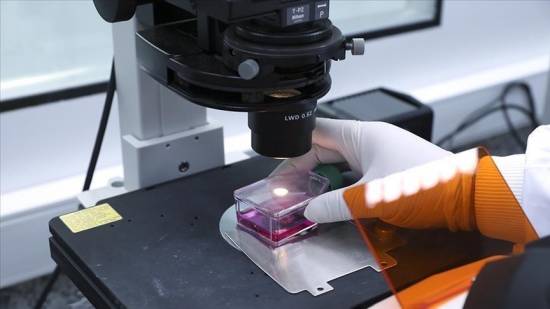The European Region remains the center of the expanding monkeypox outbreak, and the World Health Organization said on Friday that efforts are needed to prevent the disease from establishing itself across a growing geographical area.
New cases have tripled since June 15 to over 4,500 laboratory-confirmed cases across the WHO Europe Region, which extends from Greenland in the northwest to the Russian Far East.
"Urgent and coordinated action is imperative if we are to turn a corner in the race to reverse the ongoing spread of this disease," said Hans Kluge, WHO regional director for Europe.
“Although last week the International Health Regulations Emergency Committee advised that the outbreak at this stage should be determined to not constitute a Public Health Emergency of International Concern (PHEIC), the rapid evolution and emergency nature of the event means that the Committee will revisit its position shortly,” WHO said.
From Jan. 1 to June 22, 3,413 laboratory-confirmed cases and one death have been reported to WHO from 50 countries and territories in five WHO Regions.
In the meantime, WHO continues to assess the risk of monkeypox in the European Region as "high," given the continued threat to public health and the rapid expansion of the disease.
WHO said continued challenges hamper the response, with additional cases reported among women and children.
The WHO European Region represents almost 90% of all laboratory-confirmed and globally reported cases since mid-May.
6 new countries
Kluge said that since his last statement on June 15, six new countries and areas have reported monkeypox cases, taking the total to 31.
"Most cases reported so far have been among people between 21 and 40 years of age, and 99% have been male, with the majority of those for whom we have information being men who have sex with men," said Kluge.
"However, small numbers of cases have also now been reported among household members, heterosexual contacts, and non-sexual contacts as well as among children," he added.
The WHO regional chief said close to 10% of patients were reported hospitalized for treatment or isolation purposes, and one patient has been admitted to an ICU.
"The vast majority of cases have presented with a rash, and about three-quarters have reported systemic symptoms such as fever, fatigue, muscle pain, vomiting, diarrhea, chills, sore throat, or headache," said Kluge.
WHO said 26 countries and areas have submitted detailed information.
"We need to continue to examine this information carefully over the next few weeks and months to understand better exposure risks, clinical presentations in different population groups, and - most importantly – to rapidly identify any changes in the trajectory of the outbreak that would affect our public health risk assessment," said Kluge./aa


